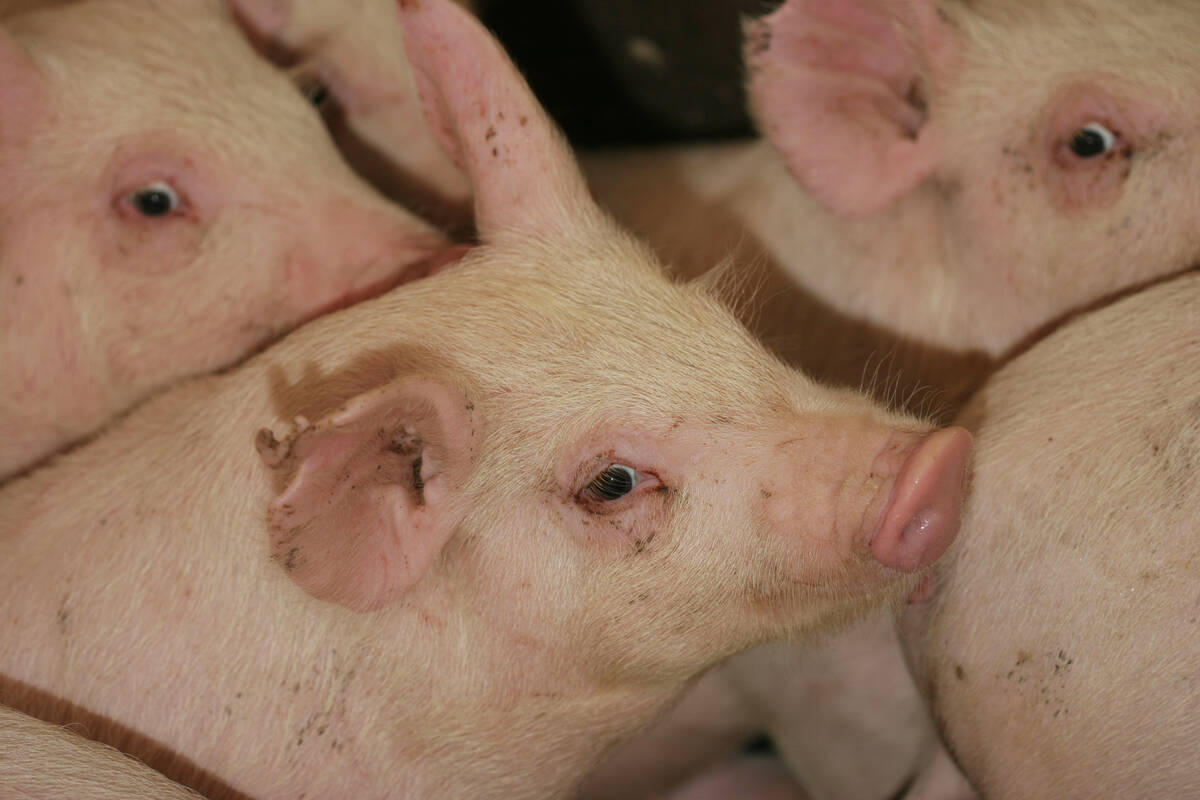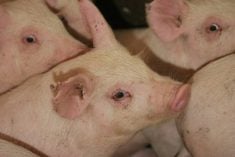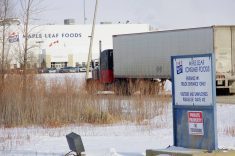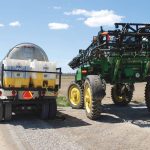The struggle to find workers is costing the Canadian beef packing industry $1.5 billion a year in lost revenue, experts say.
The greatest losses are in Alberta because most of the processing occurs in that province, where the economy is booming and labour shortage woes have become commonplace. Added to the labour shortage are problems of overcapacity, higher costs and fewer animals available for processing.
“The biggest issue in the beef industry is the overcapacity and that has ramifications all throughout in terms of costs of killing in the plant, but also the willingness and ability to bid on cattle,” said analyst Kevin Grier, author of the Canadian Cattle Buyer.
Read Also

The Western Producer Livestock Report – September 25, 2025
The U.S. national live price average for barrows and gilts was $81.21 Sept. 17. It was $78.37 Sept. 9. U.S. hogs averaged $106.71 on a carcass basis Sept. 17, up from $106.10 Sept. 9.
He disagreed with other analysts who say Canadian packers are not competitive compared to the Americans.
“If you ignore the labour issue, our packing plants are competitive,” he said.
“The two large plants in Canada would be considered to be amongst the most competitive among the Cargill-Tyson chain of plants,” he said in reference to Tyson Foods at Brooks, Alta., and Cargill Foods in High River, Alta.
“With the labour issue as such, the costs are starting to escalate because they are not able to use those plants to the fullest degree,” he said.
He also disagrees that the United States has an endless supply of cheap immigrant labour, legal or otherwise.
“They pay union wages that are negotiated,” he said.
Canfax reports that Canada added 140,000 extra spaces to its federally inspected beef slaughter capacity in 2006. That means 94,000 animals could be killed a week, or nearly five million a year, compared to 4.7 million in 2005.
Yet last year the average weekly kill was 64,000 head a week and analysts do not expect a surge in processing for 2007. In recent weeks processing has fallen as low as 58,000 head, putting capacity at 60 percent.
Grier said a large plant’s costs soar when it runs below capacity. A large efficient plant that can kill 5,000 head per day incurs total costs of $220 per head if it runs at full capacity. At 70 percent capacity, that same plant could have operating costs of nearly $250 per head. The additional $30 loss will be reflected in lower live bids for cattle.
Increasing processing capacity was meant to handle extra cattle in Canada after borders closed to exports after BSE was discovered in 2003. When the United States agreed to take Canadian beef in the fall of that year, there was a campaign for more capacity to fill that market.
When live slaughter cattle and feeders younger than 30 months were allowed into the U.S. in July 2005, expansion plans were put on hold and live exports of animals younger than 30 months soared.
In 2006, fed cattle exports to the U.S. were slightly more than 700,000 head compared to 319,000 for the six months after the border opened in 2005. Up to the end of March exports were 21 percent higher than the same time last year.
Last year, 327,000 feeders were shipped, representing the second largest export total for more than a decade. Boxed beef exports were down to 368,000 tonnes in 2006 but the trade in live animals more than made up for the decline since 2002 when 521,000 tonnes were exported to the U.S.
People probably did not expect to see capacity drop to 70 percent once the border opened, said Bart Holowath of Canfax.
As well, producer expectations that markets would return to pre-BSE price levels did not materialize because a higher Canadian dollar drove up processing costs compared to the United States.
Holowath does not expect improvements on the slaughter side, especially because fall calves went to feedlots later than normal last year.
Typically, the slaughter supply starts to pick up between April and June because calves placed in the fall should be ready for slaughter in the spring. However, fewer cattle were placed last fall so the wall of cattle will not appear until later in the year.
Market analyst Herb Locke of Edmonton argues that smaller Canadian plants cannot compete against the large U.S. firms. If a steer is butchered in Canada and the meat is exported, the beef is not eligible for U.S. grades.
“If that same steer steps an inch across the border and gets slaughtered, he is eligible for USDA Choice grade. He is worth more than if he was butchered one inch on the other side of the border.”
Locke said Canadians must compete on quality rather than quantity because when it comes to economies of scale, the U.S. beats Canada.
“Canadians by virtue of where they live have higher costs. Higher costs and average quality do not even come close,” he said.
“The Canadians have to develop a Canadian beef brand outside of the USDA grade.”
He foresees some processors leaving the industry.
“We’ve got more capacity in the two countries in total slaughter capacity than we need, so why would we build more? The question is, who is going to bow out first?”
However, pork giant Smithfield Foods is planning to build a beef plant in Oklahoma to kill 1.35 million head a year from its own feedlots.
“It is going to get tougher. The people who used to buy those 1.35 million cattle have to look elsewhere,” Locke said.















